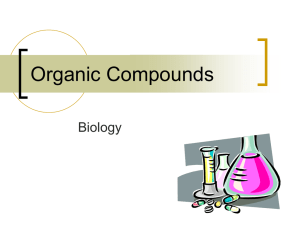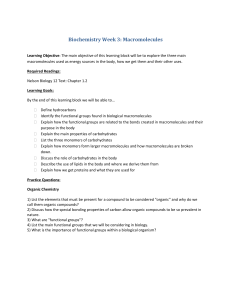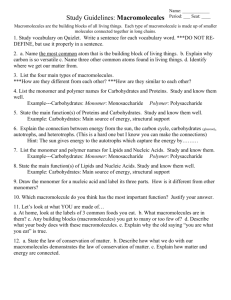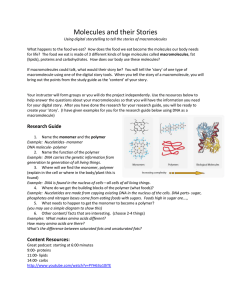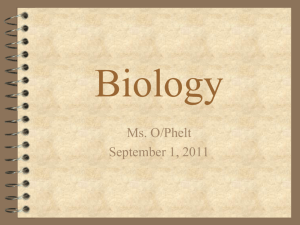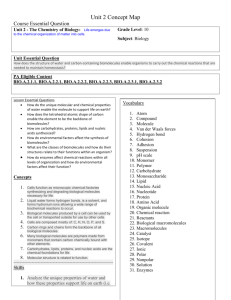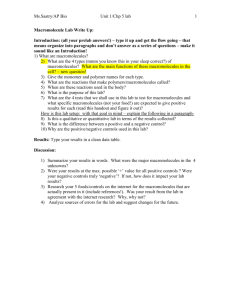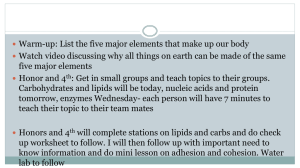macromolecules - Science Math Master
advertisement
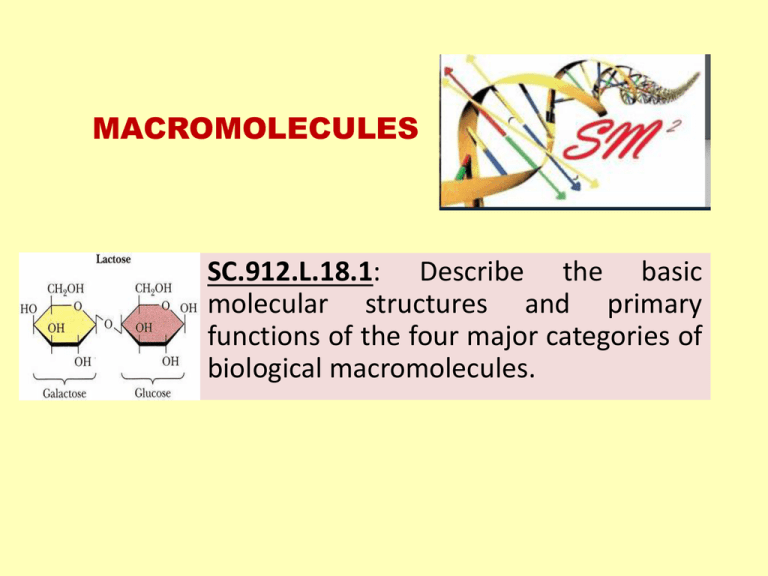
MACROMOLECULES SC.912.L.18.1: Describe the basic molecular structures and primary functions of the four major categories of biological macromolecules. HOOK: What did you eat for breakfast today? MACROMOLECULES Click HERE to see the misconceptions that you students may have about food and energy. 1. Overview of Macromolecules Class discussion: What molecules are we looking to obtain when we eat? Activating Prior knowledge: Student already know what a molecule is from studying the properties of water. 1. Students are given a list of different molecules present in food. It may include vitamins, fat, sugar, protein, water, etc… 2. Teacher explains that some molecules are complex (large) and called macromolecules. 3. Student learn that they are 4 major macromolecules: lipids, carbohydrates, proteins, and nucleic acids. Goal: By the end of the of this unit you will be able to describe, proteins, carbohydrates, lipids. This unit will help you understand the make-up of complex molecules. 2. Help students remember the elements of focus. 25 of the 100+ elements in the world are essential for life. – SPONCH elements are the most biologically important. The most important elements for life. Copyright © 2010 Ryan P. Murphy • SPONCH molecules make – Carbohydrates (CHO) 1:2:1 – Protein (ONCH) – Lipids (fat) (CH with a few O) – Nucleic Acids DNA (PONCH) 3. Help students remember CARBON in Organic Chemistry – Carbon is the duct tape of life. It holds living thing together. Reading Organic (carbon) Compound 1. Each angle is a carbon. 2. Hydrogen atoms next to a carbon are NOT shown. 3. Any other atoms are shown ( O and N) 4. Macromolecule Superhero Fact Chart ACTIVITY Students will complete a fact chart to describe the structure and function of the different macromolecules. Superheroes will be used as a memorable activity Carbohydrate- Shazam COMPOSITION: CHO MONOMER (small): monosacharride POLYMER (large): disaccharide or polysaccharide Function: Energy How to recognize them: RING with O (oxygen) in one corner Tend to end in -Ose (Glucose) Carbohydrates Simple Complex Monosaccharides Polysaccharides Fructose, Glucose (Fruit and Sugar) Starch, Cellulose (Grains, Plant Cell Walls) Resources BrainPop Carbohydrates (requires subscription) The Glucose Song LIPIDS- The Blob COMPOSITION: MONOMER POLYMER Function: How to recognize it: Resource PROTEINS- The Hulk COMPOSITION: MONOMER POLYMER Function: How to recognize it: Nucleic Acid - Superman COMPOSITION: MONOMER POLYMER Function: How to recognize it: Resource


